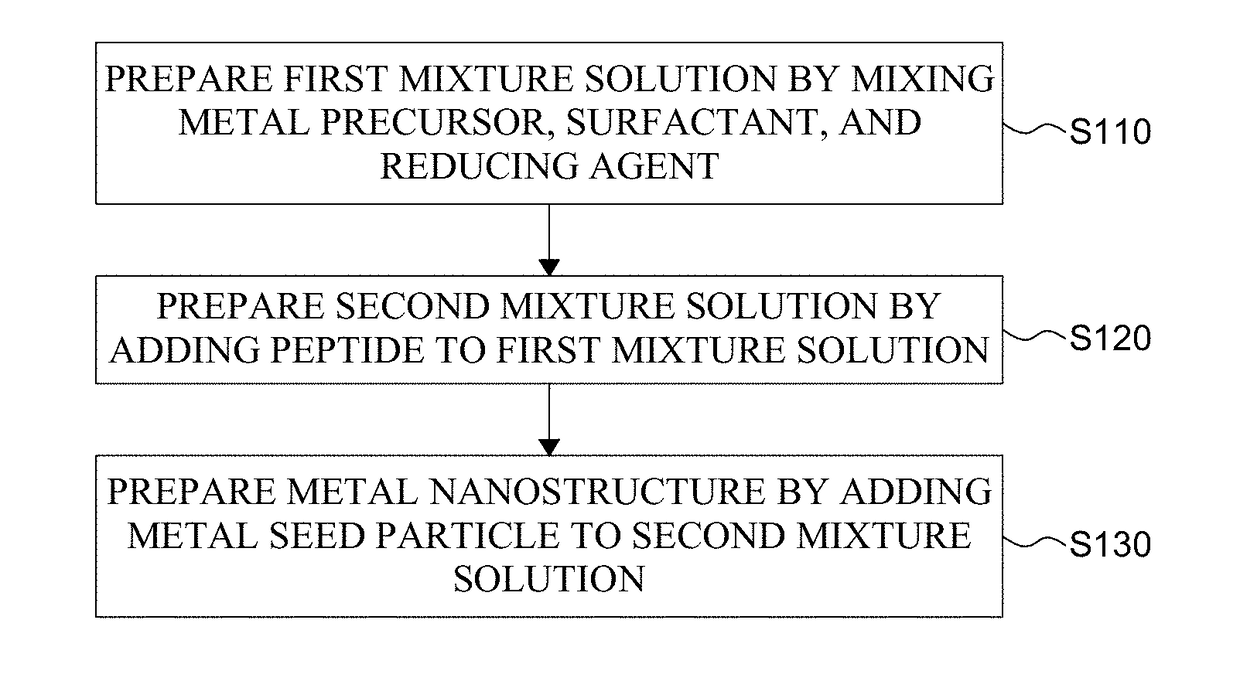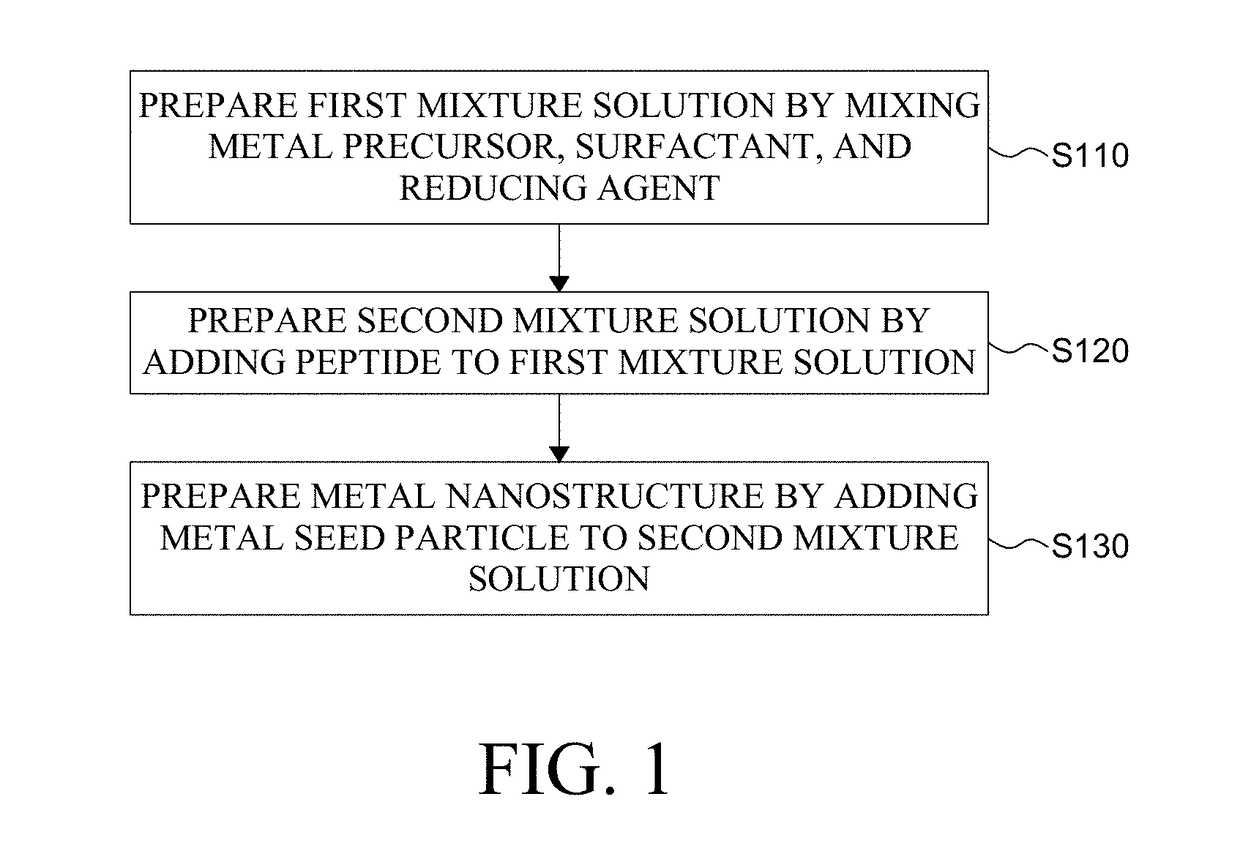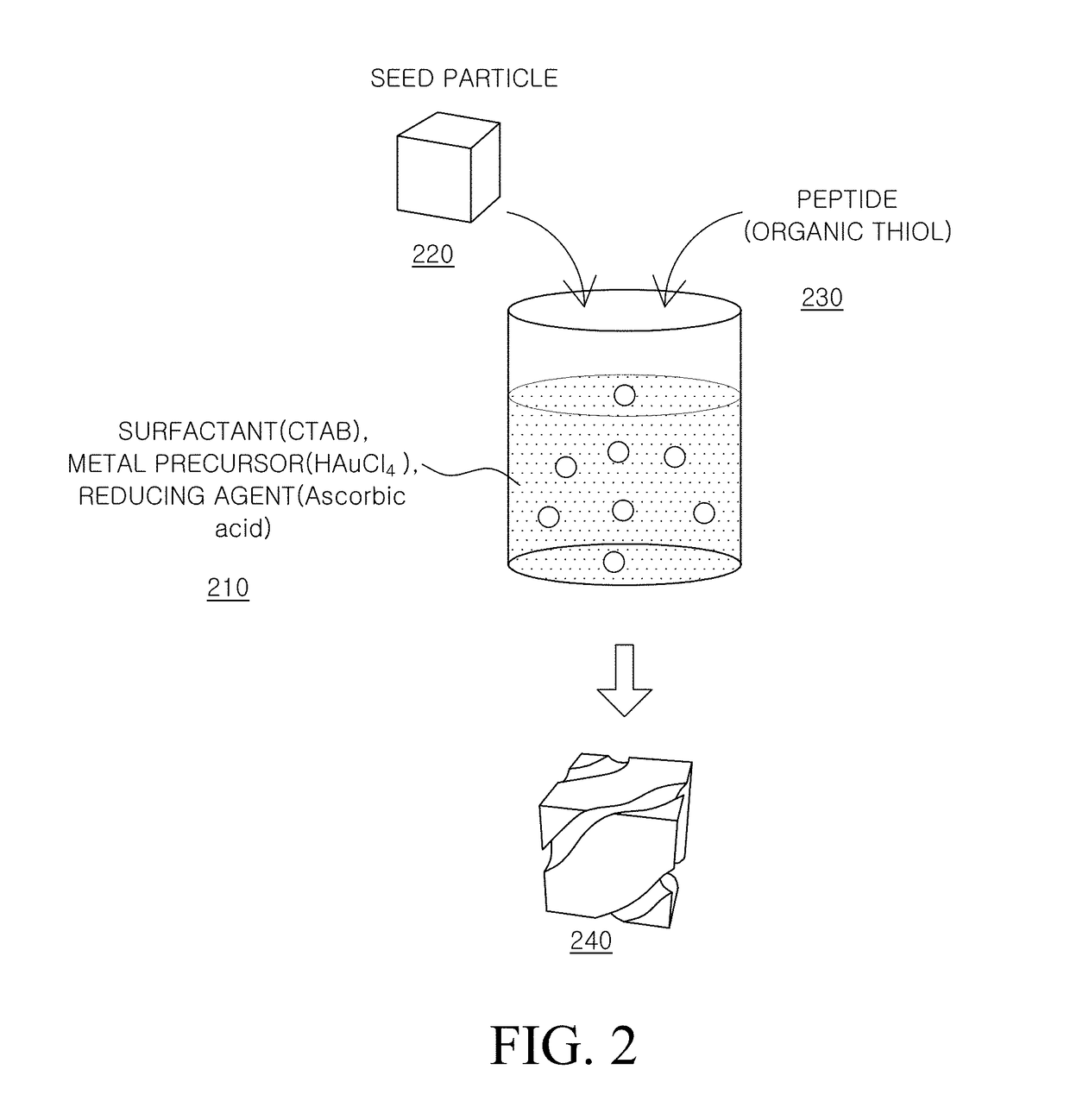Metal Nanostructure and Method for Manufacturing Thereof
- Summary
- Abstract
- Description
- Claims
- Application Information
AI Technical Summary
Benefits of technology
Problems solved by technology
Method used
Image
Examples
example 1
[0073]0.8 mL of hexadecyltrimethylammonium bromide (CTAB) which was a surfactant having a concentration of 100 mM was added into 3.95 mL of water. 0.1 mL of 10 mM tetrachloroauric (III) trihydrate (HAuCl43H2O) which was a gold precursor and 0.475 mL of 0.1 M L-ascorbic acid which was a reducing agent were mixed with the above solution and then blended by a vortex mixer for one minute to prepare a first mixture solution. 0.5 μL of 1 mM L-cysteine dissolved in water was added to the prepared first mixture solution 210, and then blended by the vortex mixer for 1 minute to prepare a second mixture solution 210. The growth started by adding a cube nanoparticle 220 having a size of 45 nm to the second mixture solution 210 and then two hours later, a metal nanostructure 240 having a chiral structure controlled by the L-cysteine was synthesized. Thereafter, the resulting metal nanostructure was washed and separated through centrifugation (5000 rpm for 30 seconds).
[0074]The method for manufa...
example 2
[0091]The chiral metal nanostructure was prepared by the same method as Example 1 except that L-glutathione was used instead of L-cysteine.
[0092]FIGS. 4A to 4D are schematic diagrams and SEM images for explaining a process of forming a chiral metal nanostructure according to Example 2. FIG. 4A is an SEM image of a chiral metal nanostructure prepared by Example 2. FIGS. 4B and 4C are a schematic diagram and an SEM image seen from {110} and {100} directions for explaining a behavior of a hexoctahedron metal particle surface which is an intermediate in the presence of L-glutathione. FIG. 4D is a schematic diagram and an SEM image for explaining a structure of a chiral metal nanostructure prepared by Example 2. The shape and the surface of the metal seed particles are the same as those described with reference to FIGS. 3A to 3D, so that a specific description will be omitted.
[0093]Referring to FIGS. 4B and 4C, L-glutathione is mainly adsorbed in the R region of the hexoctahedron metal p...
example 3
[0104]The chiral metal nanostructure was prepared by the same method as Example 1 except that D-cysteine was used instead of L-cysteine.
[0105]FIG. 7A is an SEM image of a chiral metal nanostructure prepared by Example 1. FIG. 7B is an SEM image of a chiral metal nanostructure prepared by Example 3.
[0106]Referring to FIG. 7A, the chiral metal nanostructure formed using L-cysteine had a twisted corner. Specifically, the chiral metal nanostructure illustrated in FIG. 7A had a corner m which was rotated by −φ degree from a straight line n obtained by connecting vertexes. Differently from this, the chiral metal nanostructure illustrated in FIG. 7B had a corner m′ which was rotated by +φ degree from a straight line n′ obtained by connecting vertexes. That is, it was confirmed that the chiral metal nanostructure prepared using L-cysteine and the chiral metal nanostructure prepared using D-cysteine had chiral structures which rotate in opposite directions.
[0107]FIG. 7C is a graph illustrati...
PUM
| Property | Measurement | Unit |
|---|---|---|
| Size | aaaaa | aaaaa |
| Size | aaaaa | aaaaa |
| Particle size | aaaaa | aaaaa |
Abstract
Description
Claims
Application Information
 Login to View More
Login to View More - R&D
- Intellectual Property
- Life Sciences
- Materials
- Tech Scout
- Unparalleled Data Quality
- Higher Quality Content
- 60% Fewer Hallucinations
Browse by: Latest US Patents, China's latest patents, Technical Efficacy Thesaurus, Application Domain, Technology Topic, Popular Technical Reports.
© 2025 PatSnap. All rights reserved.Legal|Privacy policy|Modern Slavery Act Transparency Statement|Sitemap|About US| Contact US: help@patsnap.com



